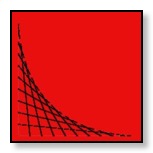08 May 2011
A curve stitch in time
12/05/11 14:41 Filed in: Goals of mathematics

I wish I hadn’t read the Harry Potter books.
Then I’d be able to enjoy them again for the first time.
I sympathised with this girl’s comment, overheard on the train home from work. We could all list a multitude of experiences that thrilled and engaged the first time round but lost frisson with repetition. Of course we can’t go back (and if we could return to the first time then we wouldn’t be getting the excitement twice over anyway), but one of the joys of teaching is to witness children’s ‘Aah’ or ‘Aha’ moments - a vicarious re-living of experiences.
Her comment got me mulling over what mathematics I could remember learning that, first time round, had caught my interest. I couldn’t recall much of my primary maths lessons other than doing pages of ‘sums’ and I enjoyed those more for the precision of neatly penning one-digit-to-one-square than for the pleasure of the calculations themselves. Nice graphics, dull mathematics.
Then I recalled a student teacher introducing us to curve stitching. No longer fashionable, so for anyone not familiar with the idea, it involves constructing two perpendicular axes with scales from, say 1 to 9, and then joining up the pairs of points on the axes that total to ten. I remembered forcing a bodkin threaded with thick yellow wool through fibrous unbleached board. As more pairs got joined a little bit of mathematical magic happened: the straight lines combined to reveal a curve.
Curve stitching probably isn’t taught much now as it lacks immediate application and doesn’t appear on international tests. A shame since I think it pinned down some important impressions for me. First, it introduced me to the world of mathematics beyond arithmetic and showed me the beauty in that world. Second, when, years later, I met calculus and differentiation, the traces in my body from, literally, stitching a curve out of straight lines, gave me the physical grounding of the meaning of tangents to curves.
I can’t remember the name of the student teacher and I doubt she chose to teach curve stitching as a foundation for calculus. But we should not underestimate how what we teach today may echo down the years. Another joy of teaching.
blog comments powered by Disqus
Comments
